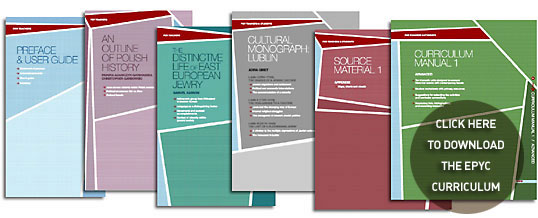

The Educational Program on Yiddish Culture (EPYC) is the definitive resource for secondary education on Eastern European Jewish History and Yiddish Culture. This monumental seven-volume educational resource, now available in both English and Hebrew, addresses an urgent need to transmit the lost and nearly forgotten history and culture of Eastern European Jewry to future generations. EPYC was developed by the YIVO Institute for Jewish Research in New York, using the vast resources of its library and archives, which together contain more than 22 million documents and artifacts on Eastern European Jewry. It is a comprehensive secondary curriculum that is ideally suited for Jewish schools, as a resource for Holocaust studies, and as a curriculum that advances multiculturalism and tolerance in public schools

EPYC was originally designed as an integrated seven volume set, from historical essays to curriculum manuals, that adapts to a variety of educator styles and classroom settings. It uses an interdisciplinary approach that combines history, sociology, anthropology, religion and folklore. It is also a valuable stand-alone resource for students and researchers of Eastern European Jewish History.
Together with the new educational website that was launched in December 2004, When These Streets Heard Yiddish, EPYC now offers more to educators and students than other Jewish history educational materials by bringing this illustrious history back to life in an exciting multimedia format (see http://epyc.yivo.org).
EPYC goes beyond the scope of traditional Jewish history curriculums by stimulating a dialogue with the past. While learning about the history and culture of Eastern European Jewry, students will be challenged to relate this history to contemporary ethical, philosophical and political issues.
Click the image above to learn more about the EPYC curriculum and its component books, which are available free of charge for download only through this website. Once you have downloaded all the EPYC components, you will be able to select the material that interests you and your students and begin to introduce the glorious history and culture of Eastern European Jewry into your classroom.




